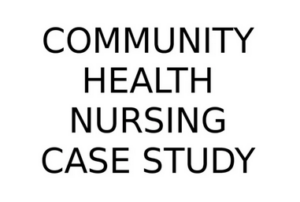Communication and Interview Techniques for a 4-Year-Old African American Male Living in a Rural Community
When communicating with and interviewing a 4-year-old African American male in a rural community, it’s crucial to create a comfortable and age-appropriate environment. Although the techniques used for interviewing a child may not differ significantly based on race, the health disparities experienced by Black children compared to their white counterparts must be acknowledged. Understanding these disparities is vital for effective healthcare delivery.
Importance of Cultural Sensitivity in Pediatric Care
Cultural sensitivity is paramount in healthcare. It’s essential to engage with the child’s parents or guardians, as they are the primary sources of information about the child’s health and background. By fostering a secure and welcoming atmosphere, healthcare providers can better understand the child’s unique needs and circumstances.
Targeted Questions Based on Social Determinants of Health
To effectively assess the child’s health, targeted questions should focus on the social determinants of health. These include:
- Living Environment: Inquire about the safety of the home, including the possibility of lead-based paint. According to the EPA (n.d.), landlords must disclose known lead hazards in pre-1978 housing.
- Access to Healthcare: Ask about the child’s access to medical services and frequency of check-ups.
- Access to Food: Investigate food security by asking about the family’s access to nutritious foods.
- Income Status: Understanding the family’s financial situation can highlight potential barriers to healthcare.
- Educational Needs: Questions regarding the child’s early education and any learning support required can also be crucial.
These inquiries provide a comprehensive view of the child’s living conditions and health risks.
Utilizing Risk Assessment Instruments
To evaluate health risks, employing appropriate risk assessment instruments is essential. The Child and Adolescent Health Measurement Initiative (CAHMI) Health Risk Screening Tool is particularly useful, assessing factors related to nutrition, exercise, mental health, and injury prevention. Additionally, the Youth Risk Behavior Surveillance System (YRBSS) can provide insights into behavioral health, although its primary focus is on adolescents.
Health-Related Risks for African American Children
Health-related risks for a 4-year-old African American male in a rural area include:
- Lead Poisoning: Increased risk due to potential exposure in older homes.
- Obesity: Factors such as limited access to healthy foods can contribute to higher obesity rates.
- Inadequate Access to Healthcare: Rural areas often face shortages in healthcare providers and resources.
- Food Insecurity: Limited access to nutritious food impacts overall health and development.
Selected Targeted Questions for Building a Health History
When interacting with the child’s caregivers, healthcare providers can ask specific questions to begin building a comprehensive health history:
- When was the child’s most recent physical examination and bloodwork?
- How often does the child eat family meals together?
- Has anyone in the child’s immediate family been diagnosed with high cholesterol, diabetes, or heart disease?
- Does the child engage in regular physical activity?
- What type of home does the child live in—do they own or rent?
These questions aim to uncover vital health-related information and assist in creating a detailed health history for the child.
Conclusion
In summary, effective communication and interview techniques for a 4-year-old African American male living in a rural community must prioritize cultural sensitivity, create a secure environment, and consider the child’s unique social determinants of health. This comprehensive approach will enable healthcare providers to better understand the child’s health risks and deliver appropriate care.

Dont wait until the last minute.
Provide your requirements and let our native nursing writers deliver your assignments ASAP.
References
- Ball, J. W., Dains, J. E., Flynn, J. A., Solomon, B. S., & Stewart, R. W. (2019). Seidel’s guide to physical examination: An interprofessional approach (9th ed.). St. Louis, MO: Elsevier Mosby.
- Environmental Protection Agency. (n.d.). EPA. Retrieved March 3, 2023, from EPA Lead Information
- Sullivan, D. D. (2019). Guide to clinical documentation (3rd ed.). Philadelphia, PA: F. A. Davis.



